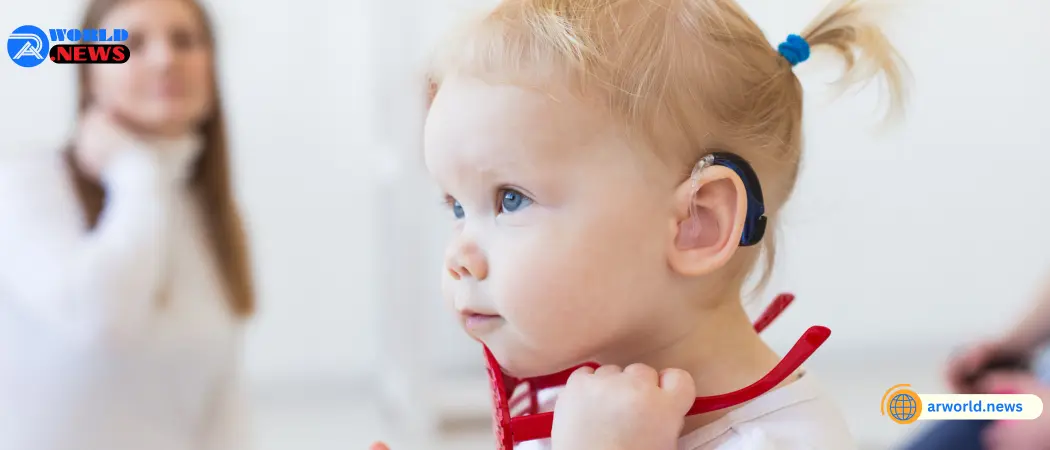Deafness And Hearing Loss
More over 5% of the world’s population, or 430 million people, require rehabilitation for their disabling hearing loss. It is anticipated that by 2050, approximately 700 million individuals, or one out of every ten, will have debilitating hearing loss.
Disabling hearing loss is defined as hearing loss greater than 35 decibels (dB) in the better hearing ear. Nearly 80% of people with debilitating hearing loss live in low- or middle-income nations. Hearing loss is more common as people get older; more than 25% of people over the age of 60 have debilitating hearing loss.
Hearing loss and deafness
Hearing loss refers to a person’s inability to hear as well as someone with normal hearing (hearing thresholds of 20 dB or better in both ears). Hearing loss can be minimal, moderate, severe, or profound. It can impair one or both ears, causing difficulties hearing conversational speech or loud sounds.
The term “hard of hearing” refers to those who have modest to severe hearing loss. People who are hard of hearing communicate primarily through spoken language and can benefit from hearing aids, cochlear implants, and other assistive technologies, as well as captioning.
Deaf people typically have significant hearing loss, implying little or no hearing. They frequently communicate via sign language.
Causes of Hearing loss and Deafness: :Although these circumstances can occur at any time during one’s life, they are most likely to have an impact during important stages.
Prenatal factors
include inherited and non-hereditary hearing loss,
as well as prenatal diseases like rubella and CMV.
Perinatal conditions
include birth hypoxia, a shortage of oxygen during birth, and
hyperbilirubinemia, which causes severe jaundice in the newborn era.
Management of perinatal complications, including low birth weight.
Childhood and Adolescence
- Chronic ear infections (suppurative otitis media)
- Fluid collection in the ear (chronic nonsuppurative otitis media)
- Meningitis and other infections.
- Chronic diseases commonly affect adults and the elderly.
Risk factors for sensorineural hearing loss include - smoking, otosclerosis, aging, and abrupt loss.
Factors to consider throughout life, including cerumen impaction (impacted ear wax). - Trauma to the ear or head, including loud noises and sounds.
- Ototoxic medications
- Occupational ototoxic substances Nutritional deficits.
- Possible causes of hearing loss include viral infections, ear disorders, and genetics with delayed or gradual onset.
- The impact of untreated hearing loss.
When left untreated, hearing loss affects many elements of life on an individual level.
Communication, cognition, social isolation, stigma, influence on society and economy, and effects on years lived with disability (YDLs and DALYs) are all factors to consider. Regarding education and employment: In underdeveloped nations, children with hearing loss and deafness frequently do not attend school. Adults with hearing loss have a significantly higher unemployment rate. When compared to the overall workforce, a greater proportion of people with hearing loss work in lower-level jobs.
According to the World Health Organization, untreated hearing loss costs the world economy $980 billion per year. This covers healthcare expenditures (excluding hearing aids), educational support costs, productivity losses, and social costs. Low- and middle-income countries bear the majority of these costs (57%)
Prevention
Many of the causes of hearing loss can be avoided by implementing public health policies and therapeutic therapies throughout the lifespan.
Hearing loss prevention is critical throughout the life cycle, from prenatal and perinatal stages to old age. Nearly 60% of hearing loss in children is caused by preventable causes that can be avoided with public health efforts. Similarly, the most prevalent causes of adult hearing loss, such as exposure to loud noises and ototoxic medications, are preventable.
Effective strategies for minimizing hearing loss at different phases of life are:
To prevent ototoxic hearing loss, consider immunization, good maternal and childcare practices, genetic counseling, managing common ear conditions, occupational hearing conservation programs, safe listening strategies, and rational medication use.
Identification and Management
- Early detection of hearing loss and ear disorders is critical to successful care.
- This necessitates rigorous screening for hearing loss and related ear problems in the most vulnerable populations. This includes:
- Individuals at risk include newborns and infants, pre-school and school-aged children, workers exposed to noise or chemicals, those on ototoxic medications, and the elderly.
- Hearing tests and ear examinations can be performed in both clinical and community settings. The hearWHO app and other technology-based solutions enable screening for ear disorders and hearing loss with minimum training and resources.
- Once hearing loss is discovered, it is critical that it be managed as soon as feasible and appropriately to minimize any negative consequences.
- Rehabilitation for Hearing Loss
Rehabilitation enables people with hearing loss to function optimally, allowing them to be as independent as possible in daily activities. Specifically, rehabilitation enables patients to participate in education, jobs, recreation, and significant roles, such as those in their families or communities, throughout their lives. Interventions for rehabilitation of patients with hearing loss include
Our services include training in hearing technologies (e.g., hearing aids, cochlear implants, and middle ear implants), speech and language therapy to improve communication skills, and sign language and sensory substitution training (e.g., speech reading, print on palm, Tadoma, signed communication).
Our services include hearing assistive technology (e.g. frequency modulation and loop systems, alerting devices, telecommunication devices, captioning services, and sign language interpretation), as well as counseling, training, and support to improve engagement in education, work, and community life.
WHO response
- WHO’s ear and hearing care effort aims to promote integrated, people-centered care (IPC-EHC).
- WHO’s activity is governed by the WHO World Hearing Report (2021) and the World Health Assembly Resolution on Deafness and Hearing Loss Prevention.WHO’s activities include:
- advising, assisting, and supporting Member States in raising awareness of ear and hearing care issues;
- Facilitating the generation and transmission of ear and hearing care-related data and information, such as through the World Report on Hearing;
- Providing technical resources and guidance to facilitate planning and health system capacity building for ear and hearing care.
- Providing guidelines to strengthen rehabilitation for people with hearing loss through the Package of interventions for rehabilitation of hearing loss;
Supporting health worker training in ear and hearing care through primary ear and hearing care training resources; - The WHO Make Listening Safe initiative promotes safe listening to reduce the risk of recreational noise-induced hearing loss. World Hearing Day is an annual advocacy event.
- Partnerships are built to develop strong hearing care programs, including affordable and accessible ear and hearing care services and hearing aids for low- and middle-income countries, as well as cochlear implants.




